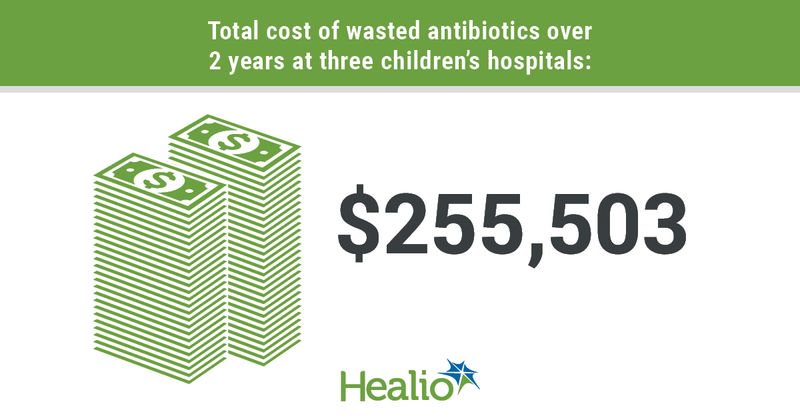Three children’s hospitals uncover $250K in antibiotic waste over 2 years
Key takeaways:
- Three children’s hospitals wasted an average of 80 doses of antibiotics per day, including drugs in short supply.
- About 50% of waste occurred within the first 2 days of admission or the day of discharge.
A pediatric health care system totaled more than $250,000 in antibiotic waste over the course of 2 years — most of it on discarded antibiotics, according to a study published in Infection Control & Hospital Epidemiology.
Children’s Healthcare of Atlanta, a three-hospital system with more than 600 total beds, calculated the cost of antibiotic waste during the 2-year period to be $255,503, of which the cost of wasted antibiotics — including drugs that were in short supply — was more than $230,000.


“In my role, I help the system optimize our antibiotics program and identify ways to increase environmental efficiencies,” Preeti Jaggi, MD, director of antimicrobial stewardship at Children’s Healthcare of Atlanta and a co-author of the study, told Healio.
“This research identified opportunities for the system to be more precise and less wasteful with antibiotics,” Jaggi said. “This is a common problem that occurs in many pediatric hospitals because of specific weight-based dosing and time between ordering and pharmacy preparation. Our goal is to start patients on the right antibiotics as soon as possible, and we strive to ensure our patients don’t have longer than necessary hospital stays. These quality initiatives can have an impact on antibiotic prescribing.”
During 2020 and 2021, the researchers found that the hospitals wasted a total of 58,607 doses of antibiotics — an average of 80 doses per day — with ampicillin being the most wasted drug at 7,789 doses.
More than 99% of wasted doses were IV or suspension formulations, whereas the rest were tablets. Additionally, about 50% of waste occurred within the first 2 days of admission or the day of discharge, the reported.
Jaggi said the findings “have prompted some changes within the system.”
“[Children’s of Atlanta] has instituted automatic stop times for antibiotics, so the pharmacy doesn’t prepare unnecessary doses,” Jaggi said. “We are discussing ways providers can switch patients to an oral therapy earlier and working on earlier discharge planning.”
The automatic stop times were instituted for situations such as febrile neonates who received 36 hours of antibiotics with pending blood cultures and patients treated for otitis media. The system is considering incorporating other automatic stop times or prior authorization for broad-spectrum antibiotics, as well as an educational campaign for providers to urge early discharge planning, such as changing to oral therapy sooner, the researchers said.
“What we documented is primarily an inpatient hospital issue, but this antibiotic waste also likely occurs in the outpatient setting due to antibiotic bottle sizes, like amoxicillin, which force us to provide more drug than is actually needed for patients,” Jaggi said. “It takes a considerable amount of energy to produce and dispose of these unused drugs. The U.S. health care system contributes to a significant portion of U.S. carbon emissions, and any effort to try and minimize unnecessary waste that we identify in our daily practice can help.”
